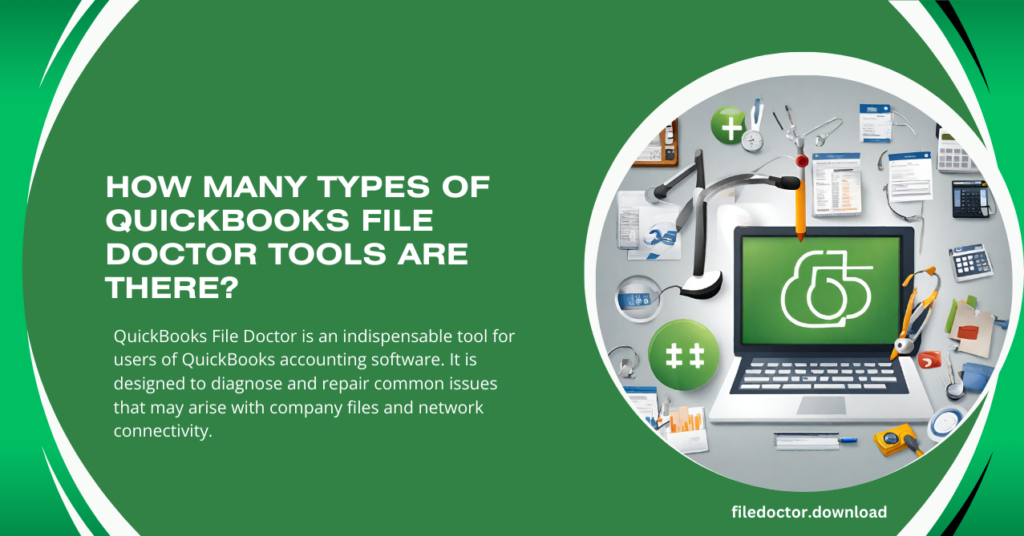
QuickBooks File Doctor is an indispensable tool for users of QuickBooks accounting software. It is designed to diagnose and repair common issues that may arise with company files and network connectivity. However, it’s essential to understand that the File Doctor tool has different versions, each catering to specific needs and scenarios. In this article, we’ll explore the various QuickBooks File Doctor tools and their unique features, helping you choose the right tool for your QuickBooks troubleshooting needs.
Overview of QuickBooks File Doctor Tools
QuickBooks File Doctor tools can be broadly categorized into two types:
- Standalone Version
- Built-in Version (QuickBooks Tool Hub)
Let’s delve deeper into each type to understand their functionalities and differences.
Standalone Version
The standalone version of QuickBooks File Doctor is an older variant that is available as a separate download. This version was specifically designed to address issues related to:
- Opening company files (.QBW) that are damaged or corrupted.
- It resolves -6000 series errors that occur when opening a company file.
- I am fixing network issues, particularly in a multi-user setup, such as H202, H303, and H505 errors.
Features of the Standalone Version:
- Direct Download: This version could be downloaded directly from the Intuit website and installed independently of QuickBooks.
- Compatibility: It was compatible with specific versions of QuickBooks Desktop, primarily QuickBooks 2011 and later versions.
- Limitations: The standalone version had some limitations regarding usability and compatibility with newer versions of QuickBooks.
Built-in Version (QuickBooks Tool Hub)
The built-in version of QuickBooks File Doctor is the more modern and recommended tool, integrated into the QuickBooks Tool Hub. This version was introduced to provide a more comprehensive solution for troubleshooting QuickBooks issues, combining multiple tools in one application.
Features of the Built-in Version:
- Integration with QuickBooks Tool Hub: The File Doctor is part of the Tool Hub, which includes other tools like QuickBooks Database Server Manager, QuickBooks Refresher, and more.
- Enhanced Usability: The user interface is more intuitive, making diagnosing and repairing issues easier for users.
- Compatibility: It is compatible with all current versions of QuickBooks Desktop.
- Automatic Updates: Being part of the Tool Hub, the File Doctor receives automatic updates, ensuring it stays effective for the latest QuickBooks versions.
Choosing the Right QuickBooks File Doctor Tool
When deciding which version of QuickBooks File Doctor to use, consider the following factors:
- QuickBooks Version: The standalone version might be more suitable if you use an older version of QuickBooks (2011-2016). The built-in version within the QuickBooks Tool Hub is recommended for newer versions.
- Issue Type: The built-in version offers more comprehensive diagnostics and repair capabilities if you face network-related issues in a multi-user setup.
- Ease of Use: The built-in version provides a more user-friendly interface and is integrated with other valuable tools in the QuickBooks Tool Hub.
Conclusion
Understanding the different types of QuickBooks File Doctor tools is crucial for effectively troubleshooting and resolving issues with your QuickBooks software. While the standalone version served its purpose in the past, the built-in version within the QuickBooks Tool Hub is now recommended for its enhanced features, compatibility, and ease of use. Regardless of which version you choose, QuickBooks File Doctor remains a vital tool for maintaining the health and integrity of your QuickBooks company files and network setup.

